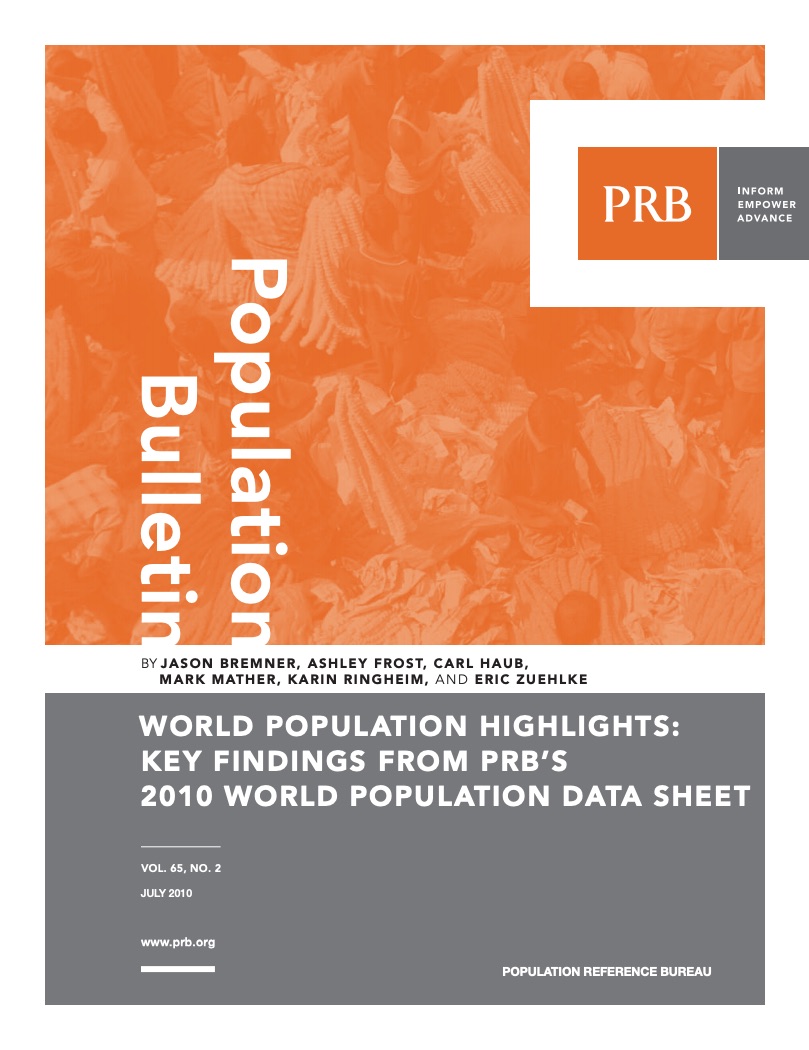The World’s Next ‘Population Problem’
(2005) Ask about "the population problem" to people of a certain age, and the first and perhaps only thing that comes to mind is the "population bomb" or "population explosion."
(2005) Ask about "the population problem" to people of a certain age, and the first and perhaps only thing that comes to mind is the "population bomb" or "population explosion."
(2010) The cities and towns of developing countries are projected to absorb at least 2.5 billion additional people by 2050. At the same time, these areas will experience global climate change likely to bring floods, droughts, food insecurity, and loss of livelihoods.
Already one of the world's major centers of displaced people, Colombia faces the likelihood that the latest escalation of a multifaceted civil war will force even more people from their homes and increase the risks of illness and death.

Project: American Community Survey and Decennial Census Support Services
The addition of a citizenship question to the 2020 Census may put almost one in 10 U.S. households and nearly 45 million people at greater risk of not being counted―the question has been shown to reduce response rates. Undercount risk is particularly high among young children.

Older adults’ housing challenges reflect social and financial inequalities and can lead to poor health.

What’s next for an aging, shrinking world?
Mathematical demography is rarely used in heated political debate. But the classic 1925 article "On the True Rate of Natural Increase," which synthesized years of work by Alfred Lotka and several collaborators, led off with a snipe at those who had just passed the most restrictive immigration law ever seen in the United States.

(2009) Over the last several decades, many industries have experienced significant structural changes that have affected their employees.